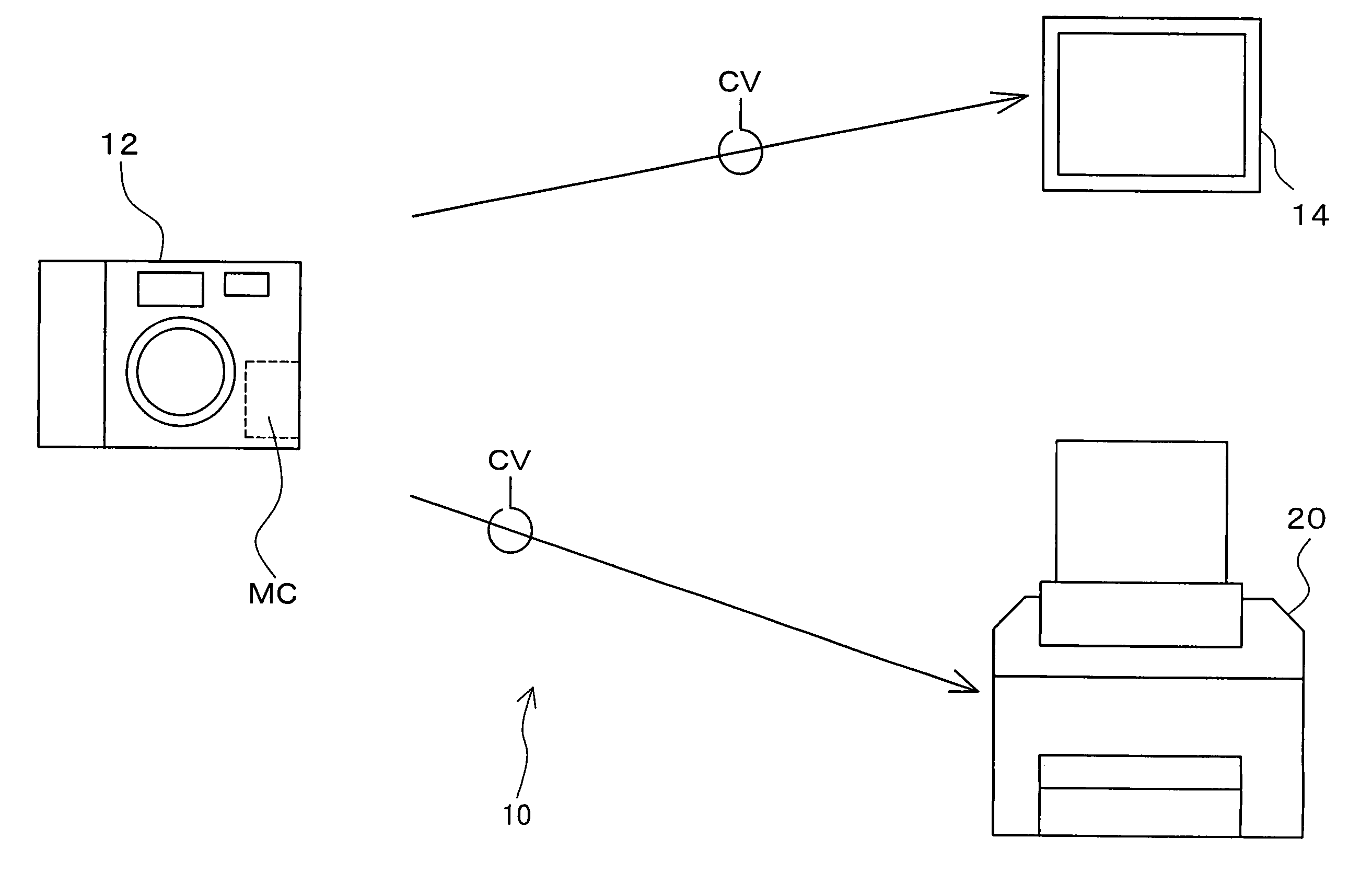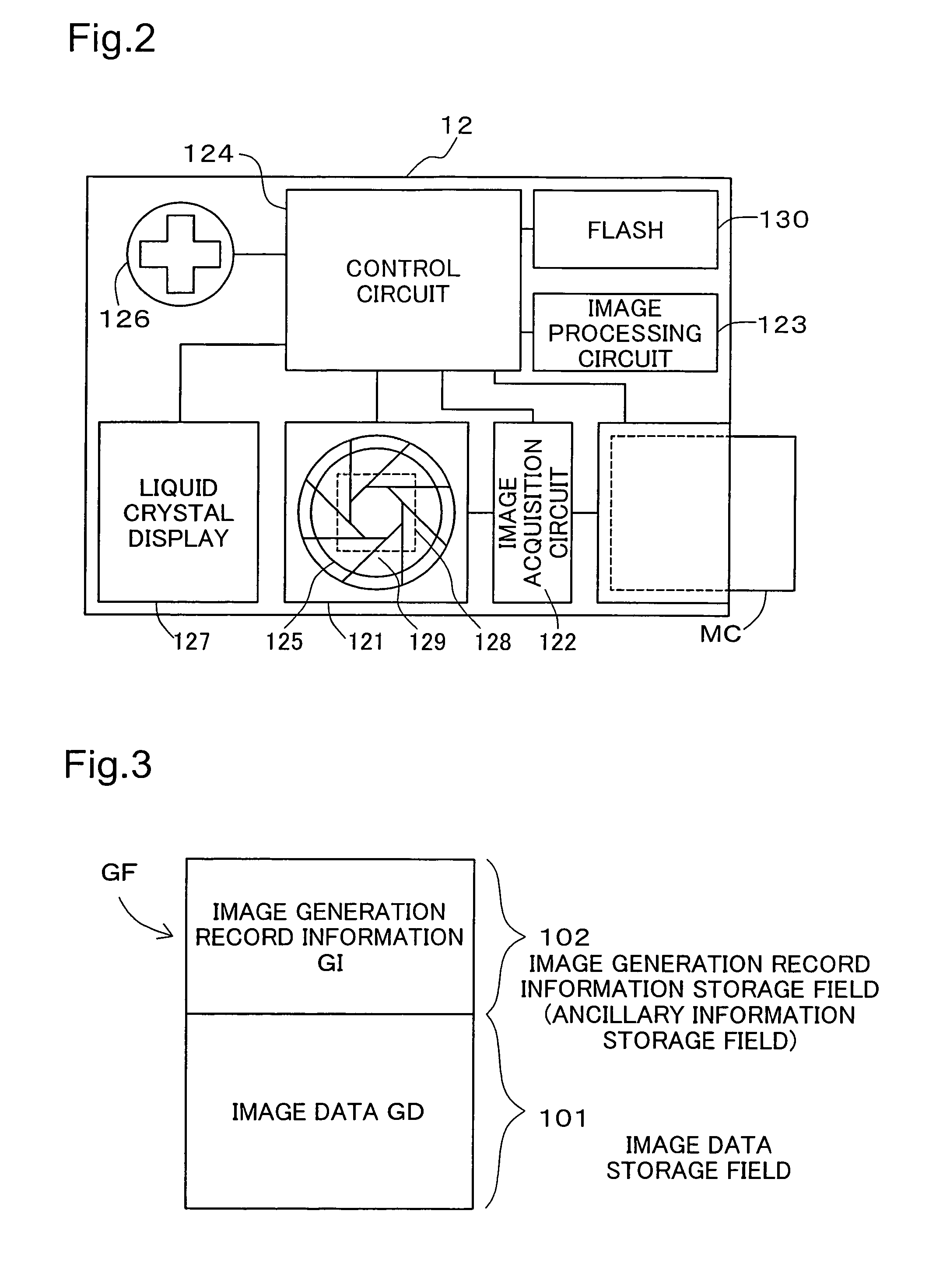Image-quality adjustment of image data
a technology of image data and adjustment technique, applied in the field of image adjustment technique, can solve the problems of inability to improve image quality, inability to improve overall image quality in some instances, and high luminan
- Summary
- Abstract
- Description
- Claims
- Application Information
AI Technical Summary
Benefits of technology
Problems solved by technology
Method used
Image
Examples
embodiment 1
F1. Embodiment 1 of Automatic Image Quality Adjustment Process
[0136]FIG. 11 is a flowchart showing a processing routine for automatic image quality adjustment processing (corresponding to Step S340 in FIG. 10). CPU 31 (FIG. 7) analyzes the image generation record information GI and acquires parameter values for flash information etc. (Step S400). Next, in Step S410, CPU 31, on the basis of the acquired parameter values, makes a decision as to whether to execute image quality adjustment processing (described in detail hereinbelow). In the event that it is decided to execute image quality adjustment processing (Step S410: Y), in Step S420, CPU 31 executes image quality adjustment processing (described in detail hereinbelow). In Step S410, in the event that it is decided not to execute image quality adjustment processing (Step S410: N), the routine terminates.
[0137]In this embodiment, CPU 31 decides to execute image quality adjustment processing where the following condition is met.
[01...
embodiment 2
F2. Embodiment 2 of Automatic Image Quality Adjustment Process
[0141]In this embodiment, CPU 31 (FIG. 7) decides to execute image quality adjustment processing when the following conditions are met.
[0142](a1) Flash illumination was provided at the time of image data generation; and
[0143](b1) Subject distance is equal to or less than a first predetermined value.
[0144]Condition (a1) is the same as condition (a1) in Embodiment 1. The decision regarding condition (b1) is executed on the basis of a parameter value of subject distance information acquired from the image generation record information GI. Whiteout areas are prone to occur when the amount of light on the subject from a supplemental light source exceeds the proper amount. Also, the smaller the subject distance (i.e. the closer it is), the greater the amount of light falling on the subject from the supplemental light source. In this embodiment, where the parameter value of subject distance information is equal to or less than a...
embodiment 3
F3. Embodiment 3 of Automatic Image Quality Adjustment Process
[0145]In this embodiment, as in Embodiment 2 described previously, CPU 31 (FIG. 7) decides to execute an image quality adjustment process when the following conditions are met.
[0146](a1) Flash illumination was provided at the time of image data generation; and
[0147](b1) Subject distance is equal to or less than a first predetermined value.
[0148]The difference from Embodiment 2 described previously is that the first predetermined value Lth for the condition (b1) used for deciding to execute image quality adjustment processing is adjusted on the basis of flash intensity. Flash intensity is a parameter value of flash intensity information acquired from image generation record information GI. FIG. 13 is an explanatory diagram showing relationship between first predetermined value Lth and flash intensity in this embodiment. The amount of light falling on a subject from a supplemental light source is greater the higher the flas...
PUM
 Login to View More
Login to View More Abstract
Description
Claims
Application Information
 Login to View More
Login to View More - R&D
- Intellectual Property
- Life Sciences
- Materials
- Tech Scout
- Unparalleled Data Quality
- Higher Quality Content
- 60% Fewer Hallucinations
Browse by: Latest US Patents, China's latest patents, Technical Efficacy Thesaurus, Application Domain, Technology Topic, Popular Technical Reports.
© 2025 PatSnap. All rights reserved.Legal|Privacy policy|Modern Slavery Act Transparency Statement|Sitemap|About US| Contact US: help@patsnap.com



